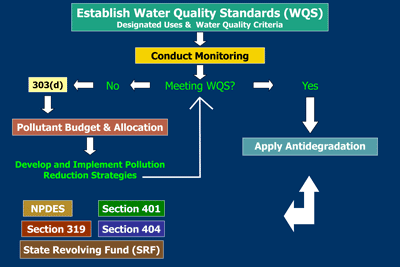NPDES Program
The CWA makes it illegal to discharge pollutants from a point source (i.e., a manmade conveyance, such as a pipe, ditch, tank, vehicle, etc.) to the waters of the United States except in accordance with a permit. Section 402 of the act creates the National Pollutant Discharge Elimination System (NPDES) regulatory and permitting program. Point sources must obtain a discharge permit from the proper authority (usually a state, but sometimes the EPA, a tribe, or a territory). Though the CWA does contain a long-range goal of zero discharge of pollutants, these permits do not, as the name of this program might suggest, simply say “no discharge.” Rather, they set limits on the amount of various pollutants that a source can discharge in a given time.
In most cases, the NPDES permitting program applies only to direct discharges to surface waters. Some cases in which discharges to ground water are hydrologically connected directly to a surface water have been incorporated into the NPDES program. A wide variety of conveyances are considered point sources, including pipes, ditches, channels, tunnels, certain kinds of ships, and offshore oil rigs.

![[logo] US EPA](https://www.epa.gov/epafiles/images/logo_epaseal.gif)